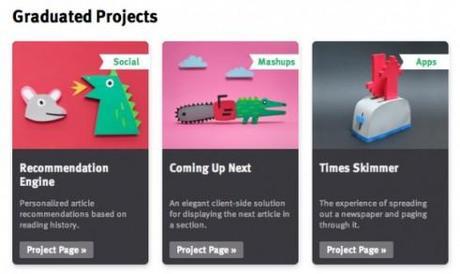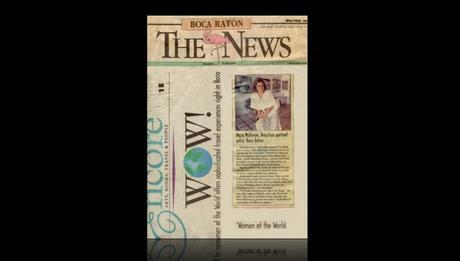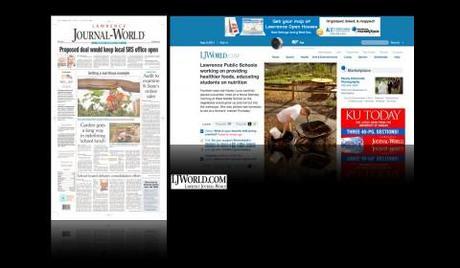TAKEAWAY: Newspapers and the media industry have traditionally NOT emphasized experimentation within their midst. All of that is changing rapidly, and now The New York Times has introduced its long-delayed Beta620, a public beta testing site where web surfers can experiment with new products that could eventually take root on NYTimes.com. Let it be a model that others will study for possible implementation. ALSO: Meet the innovators: some who dared to experiment and how they did it
Let the experimenting begin

For months, we had heard that the folks at The New York Times were planning something quite unique for a classically traditional organization: the creation of an experimental lab where new ideas and new products could be tested then incorporated into the Times’ variety of platforms for dispensing information to its users.
Finally, Beta620 is here and it looks quite promising and well thought out. Here is what you will find:
Longitude, which plots the day’s Times articles on an interactive Google map
Smart Search Bar, which sorts results and displays them without taking you away from the page you’re on
The Buzz, which shows how much traction Times articles are getting on social media
Times Companion, which lets you summon information on topics in the article you’re reading without taking you away from the page
TimesInstant, a search page that shows results as you type
NYTimes Crossword Web App, an HTML 5 version of the puzzle’s digital versions
Community Hub, a dashboard featuring stats on your comment history, a feed of comments on Times articles and, soon, Facebook friends’ comments
Of related interest:
NYTimes Lab: can a newspaper think like a start up?
http://gigaom.com/2011/08/08/nyt-labs-can-a-newspaper-think-like-a-startup/
The need for more experimentation
True innovation takes place in many different environments, but, undoubtedly, it is aided tremendously when managers create an environment in which innovation is more systematic than serendipitous.
Many industries, such as automobiles, high tech, and, of course, pharmaceuticals, have known that and have made experimental laboratories part of their organizations’ framework.
Seldom, however, do we see systematic experiments conducted by the media, and newspapers in particular. Always the first to report what is new and innovative, newspapers are not among the first to seek innovation themselves. Many industries were totally computerized before the first Video Display Terminal made it into a newsroom (circa 1974).
And, so, I rejoice when I read the story of The New York Times’ experimental lab, Beta620, and its potential to make the Times’ offerings, already impressive across platforms, more in tune with what a new generation of information consumers wants.
As someone who has been closely involved with so called “innovative projects” with over 600 newspapers worldwide, I have been lucky to arrive in their midst at a time when there was a desire to innovate, to make changes, to rethink processes, and I would like to think that it has been a rewarding and beneficial process. However, it was never systematic, and, in many cases (think redesign projects) prompted not by the results of experimental thinking, but generated by an event: newspaper buys new printing press and can add color; newspaper adapts press to allow it to change to a smaller format; newspaper appoints new editor who wants to put his stamp on the product, so let’s redesign. I am not, in any way, insinuating that there has not been some experimental thinking along the way in newspapers around the world, but I would dare say that this was more the exception than the rule. Yes, I know some of you will engage in a debate about this. I welcome such debate.

Could not find an actual image of the Boca Raton News front page, but here you can see that pink flamingo in the logo
The innovators: in 1990, Boca Raton News and the “weapons lab”
If I am going to go out on a limb on “the art of experimentation” and newspapers, based on my own four-decade career, I would probably generalize to say that, in my view, the smallest newspapers always went out to experiment with greater gusto—-and results—-than their bigger counterparts.
I may be one of the few who remembers the famous Boca Raton News“25-43” project, sponsored by the Knight Ridder group, but based on a rather small, regional Florida newspaper: we had a ball experimenting with everything from local coverage, to pink flamingos in the logo, and, indeed, we discussed turning the broadsheet newspaper into a tabloid an idea that was (tabled in five seconds!). But we experimented with a lot of topics that would still be timely today: how to attract younger readers, what will junior high school students of that era (1990) read when they became adults (we know the answer to that now), how to cover local politics, etc.
The late James Batten, who was Knight Ridder CEO at the time, called the Boca Raton News “a weapons lab” designed to investigate and test new approaches to making newspapers work better for younger readers.
Ironically, the project succeeded in attracting the younger readers we were going after, the 25-43 coveted group, but the older folks——and Boca Raton is home to many of those—did not like it. I still hear from editors who mention the Boca Raton 25-43 Project as the reason to be “cautious with what you do, so that we don’t offend the older readers”. Usually, it is at that point in the conversation that innovation stops, and the experimental lab closes down.

The innovators: in Kansas, the Lawrence Journal-World
A second example that comes to mind as highly experimental was the Lawrence, Kansas, daily, the Lawrence Journal-World, perhaps one of my best experiences working with a regional daily—-based in the town that is home to the University of Kansas—-and where experimentation was the key to our project. Subsequently, the Journal-World became one of the most innovative newspapers in its digital offerings, introducing an online edition in 1995.
It was experimentation that kept the Journal-World ahead of the pack, and it continues to do so today. I have just had a telephone conversation with Dolph C. Simons Jr., CEO and publisher, and here is what he had to say:
“Indeed, we are facing the same challenges that other newspapers do as we transition from the type of newspaper journalism we did in the 80s and the 90s and how the information business has changed to what we must provide today. But not only do we believe in experimenting, but we also believe in investing. We have a newsroom that houses print/digital/TV. When you redesigned our newspaper and helped us present information faster and better, that was also the start of our experimentation process, and that process continues actively today. We are totally convinced that information is more important today than ever, in a complex world, where readers truly need to know what is happening, what their government is doing and how it affects their lives. So here at the Journal World we stick to news and information as the most important thing we do, but we are aware that we must dispense news and information through various platforms. People from around the world visit our newsroom to see what we do. But our experimental curiosity is always there, and we continue to see how we can make things better.“
The innovators: Gannett always kept the experimental lab open
And, when one think experimentation and newspapers, one must mention Gannett, which brought us USAToday in 1985, perhaps the most innovative newspaper to come along in a long time. Gannett pioneered one newspaper trend after another, and allowed its managers/editors to experiment. I don’t think I could have changed a traditional logo (the famous eagle) of the St. Cloud Daily Times without those folks at the top of Gannett’s management saying: why not? Gannett revolutionized design, the use of color and the use of graphics. It also proved that a newspaper company could raise earnings quarter after quarter in defiance of economic cycles. And it was the first major chain to talk about giving information to readers how they want it, when they want it. Are they as experimental today? Perhaps, but apparently their experimental lab is not headquartered near USAToday, which shows its age and, pardon the analogy, is a sort of Gloria Swanson stumbling her way through scenes of Sunset Boulevard.—the aging diva clamoring that with one look she can play any role. For USAToday the one look that was copied by more newspapers than any I know of is overdue for change.

In Austria: WirtschaftsBlatt
Among my clients today, there is one where the experimental lab is always open and ready for innovative discussions.
Just today I was communicating with Alexis Johann,digital director, WirtschaftsBlatt , with whom I have worked on a variety of projects including their online and tablet editions. Each project has been harvested in an experimental workshop setting, with small groups in attendance, and with specific goals for the experiments and with conclusive “prototypes” at the end of the workshops.
Now, fresh from summer vacation, Alexis proposes a fall workshop, this time to rethink totally the WirtschaftsBlatt ‘s digital offerings, with emphasis on a relaunch of the online and mobile portals.
An enthusiastic Alexis writes me that “we would like to call this workshop something like Mobilista”.
Here is Alexis Johann’s perspective on his team’s need to experiment:
“We feel a faster than expected change in user behaviour and we have the feeling, that we need complete new user interface designs, that reflect the strong navigational impacts of mobile internet usage. It has to be innovative and fresh during the coming three years, years in which we will see mobile platforms overtaking all other information platforms.“
As we all know, innovation means experimenting, testing and launching with sometimes scarce ressources of time and money.
Hans Gasser, CEO of WirtschaftsBlatt, explains:
“This approach fuels the newspapers with a new spirit, which they need to master the challenges of the future. And it is a fun thing to do for the people.“
Of course, I will be there to accompany the WirtschaftsBlatt again inside its experimental lab . Let this new experimentation begin.
I will also be watching carefully what happens at The New York Times and what ideas will find their way into one of my favorite publications, one that I read in my tablet daily, and which I know that this experimental lab will enhance tremendously.
For newspapers particularly, the art of experimenting needs to become systematic and permanent. It is this type of thinking that incubates innovation and the serendipity that this industry needs so desperately.
Of related interest in the art of experimentation
Reed Reibstein, of Garcia Media, has done a little research about other experimental lab opportunities we should know about. Here is his report:
The Guardian encourages a similar spirit of experimentation, albeit with a different focus. In contrast with other newspapers’ attempts to lock down their news and technology, The Guardian has opened itself up. Its Open Platform page encourages outside developers to create applications based on The Guardian’s resources. Among the websites to have emerged are the Voter Power Index , which calculates the effects of British electoral reform, and What Could I Cook, which allows users to type in the ingredients they have and find useful recipes.
Aside from The Guardian, the Knight News Challenge rewarded innovation. It concluded this year. Here’s a bit of information from the Nieman Lab’s Encyclo:
“The [Knight F]oundation runs the Knight News Challenge, a five-year annual contest that awards startup grants to innovative news projects around the world. The challenge gave its first awards in 2007 and will give its fifth round in June 2011.
“Through 2010, the challenge has funded 50 projects for $23 million.Past winners include EveryBlock, Spot.Us, Ushahidi, DocumentCloud, Chi-Town Daily News, Gotham Gazette, Global Voices, and Spot.Us.
“The foundation and News Challenge’s primary purpose is to fuel innovation in journalism, and they have done so by broadening their focus to include the broader information needs of communities as well. The News Challenge also represented a shift toward a more open and participatory process for the foundation. The foundation requires each winning News Challenge project to release its code as an open-source resource for other organizations.“

